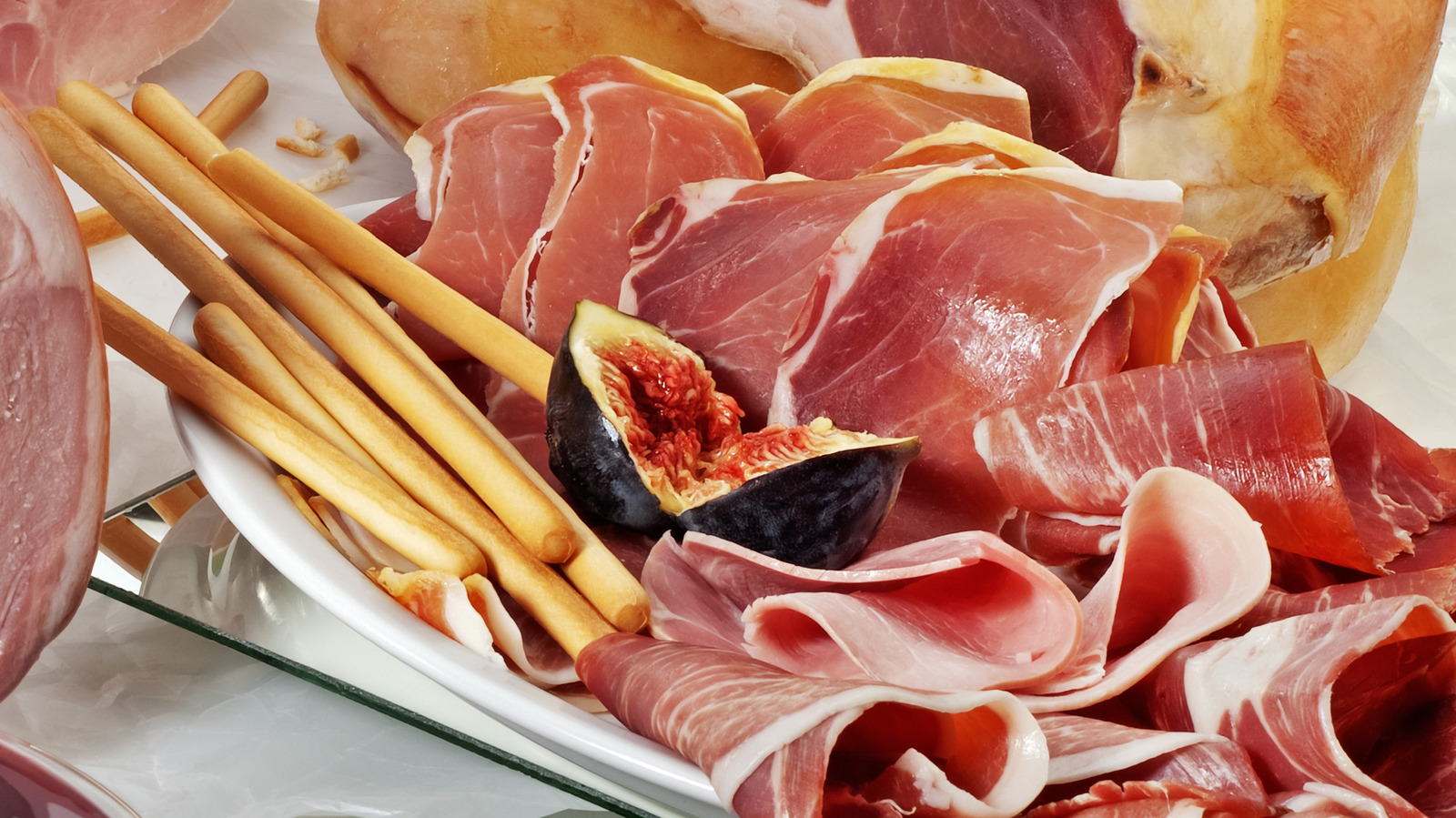We may receive a commission on purchases made from links.
While there is a plethora of rich, salty, enticing Italian deli meats to choose from, none are quite as iconic and well-known as prosciutto, whether it be di Parma or di San Daniele. The word di in Italian means of or from, and usually indicates ownership or origin. Linguistically, as well as geographically, the difference between prosciutto di Parma and prosciutto di San Daniele comes down to origin. Prosciutto di Parma comes from the Parma area of northern Italy, located in Emilia-Romagna, where Parmesan cheese is also made. Prosciutto di San Daniele is made in the municipality of San Daniele del Friuli (which is also a town in the area) in northwestern Italy, not far from the border of Slovenia. Other than just location of origin, the differences between the two prosciuttos also includes production methods and influences of terroir, which affect texture, appearance, and most of all, flavor.
Both types of prosciutto are protected by the Italian government with a label known as DOP, or Denominazione di Origine Protetta, translating to protected designation of origin. A DOP label ensures that an Italian product is being made in a certain region of Italy, as well as in accordance with traditional methods. Prosciutto di Parma and Prosciutto di San Daniele might seem almost identical at first glance, but their slight variations in production methods and the differences in environment and location lead to slightly similar but also distinct and glorious cured meats.
Prosciutto di Parma is rosy colored and soft
Meant to be served at room temperature and sliced paper-thin, prosciutto di Parma has a smooth, silky texture and a light, rosy-pink coloring encased by large ribbons of white fat. What sets prosciutto di Parma apart from other varieties is its mildly sweet, slightly nutty flavor profile, thanks to Parma’s terroir as well as the pigs’ diet that sometimes includes whey from nearby production of Parmigiano Reggiano. Prosciutto di Parma’s natural saltiness contrasts beautifully with the buttery flavor and texture, making it a delicate snack on its own, wrapped around juicy melon slices, or draped over a fresh cheese like mozzarella and drizzled with tangy aged balsamic vinegar.
Making prosciutto di Parma begins with a weekly arrival of fresh ham legs from specialty Italian pigs, which are then covered in both sea salt on the skin and a dry salt over the muscle. Kept at just above freezing for a week, the legs get another layer of salt before being hung in 75% humidity for 60-90 more days, then washed and hung again to dry fully. Critical to prosciutto di Parma’s unique taste, the legs are cured in a room flooded with the breezes of the Tyrrhenian Sea and the Apennine Mountains for another 90 days. After the exterior of the legs hardens, they are covered in a mixture of salt and lard to prevent over-drying. Finally, after this seven-month process, the legs are cured a final time in a cellar-like environment. Prosciutto di Parma uses only salt to preserve the ham, as DOP regulations prohibit nitrates and other additives, and all di Parma ham must be aged for at least 14 months and up to three years. You can buy a whole boned leg of proscuitto di Parma on Amazon, imported from Italy, for around $250.
Prosciutto di San Daniele’s terroir is idyllic for curing
About 220 miles northeast of Parma, the town of San Daniele del Friuli sits alongside the Tagliamento river and is kissed by warm air from the nearby Adriatic Sea which also meets colder air from the Alps. Prosciutto di San Daniele meat is a darker shade than di Parma, with tasting notes of dried fruit, malt, and crusty bread. The texture is a bit more firm and dense than di Parma ham, and there is a greater contrast between the meat’s salty and sweet notes, with a richer scent. Prosciutto di San Daniele’s more intense flavor is perfect for stronger-flavored pairings like aged, robust Italian cheeses and bold wines with character.
In San Daniele del Friuli, the hind legs are inspected and frozen for 24 hours before being showered in sea salt. The legs are left covered in sea salt for the same number of days as they weigh in kilograms. Unlike prosciutto di Parma, the whole legs are then pressed, which enhances the texture of the meat, as well as gives the ham leg it’s signature guitar-like shape, which includes the pig’s foot, unlike di Parma ham. From there, the legs continue to cure for about three months in a controlled setting. The legs are washed then dried before continuing to be aged for nine more months, as required by governmental protections. Any exposed meat on the leg is smeared with a blend of pork fat and flour to protect it, different from di Parma’s fat and salt smear, then the leg is tested for flavor and quality. A whole proscuitto di San Daniele can also be bought via Amazon, for around $280.







